- Home
- Bavaria Sailboats
Bavaria Sailboats: Where German Engineering Meets the Ocean
Bavaria Sailboats have certainly made their mark in the global sailing scene. They've consistently churned out comfortable, well-built cruising yachts that don't break the bank.
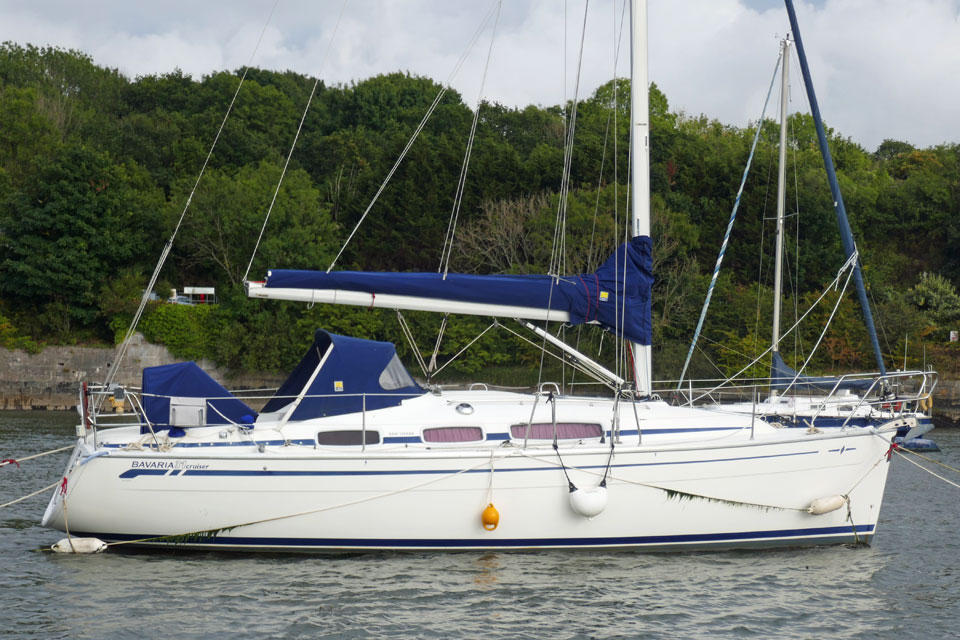 Bavaria 31
Bavaria 31From humble beginnings to becoming a major European player, Bavaria's core mission seems pretty clear: make sailing accessible. They achieve this by blending German precision with practical designs, ensuring a good time for anyone keen to cast off.
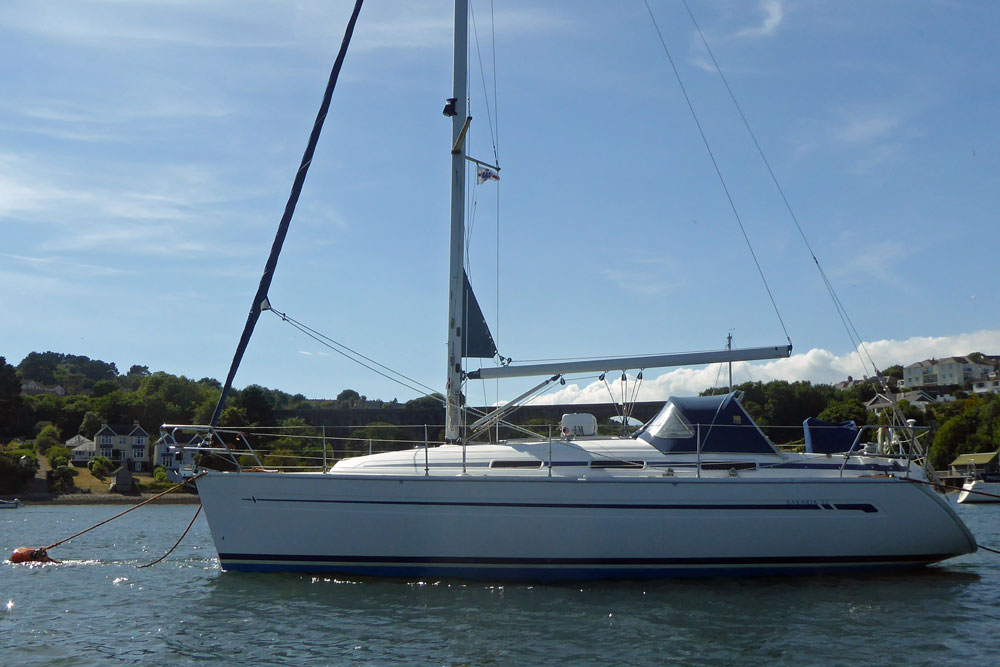 Bavaria 32
Bavaria 32In the Beginning
It all started in 1978, nestled in Giebelstadt, Germany. Winfried Herrmann, who knew a thing or two about windows, teamed up with Josef Meltl, a yacht charter broker. Their idea was pretty clever: use industrial-scale production to build yachts more efficiently, making them more affordable and opening up boat ownership to more people. This simple yet powerful philosophy – delivering an "unrivaled price-performance ratio" – quickly became their secret sauce for success.
Fast forward a few decades, and Bavaria's shipyard in Giebelstadt sprawls over 200,000 square meters. They became one of the most modern boat builders globally, even hitting a peak of around 3,500 yachts annually and employing 600 folks by 2006. While the ownership structure has seen its share of changes, including spells under private equity, that fundamental drive – combining quality craftsmanship with efficient production – hasn't wavered. Bavaria Yachts is still very much in business, actively producing boats.
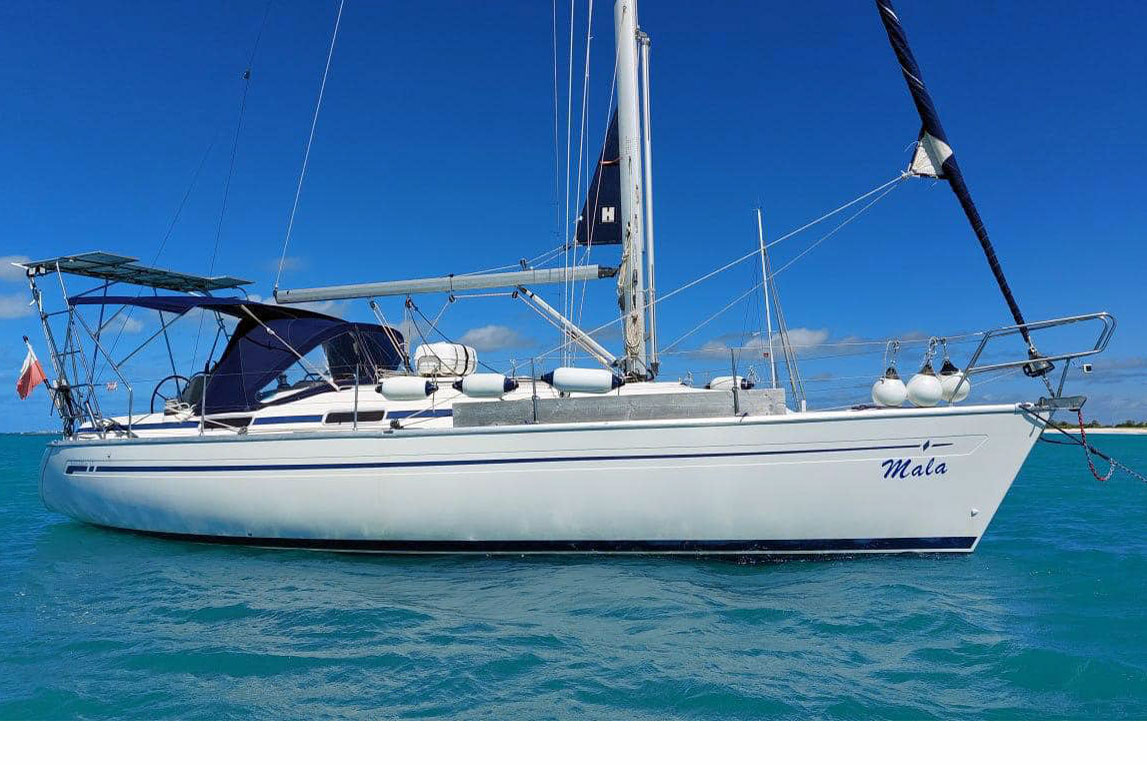 Bavaria 37
Bavaria 37Design Evolution & Standout Models
Bavaria’s designers consistently aim for a sweet spot: good sailing characteristics, easy handling, and maximizing interior volume for comfort. They haven't been shy about bringing in outside talent either. J&J Design contributed for many years, and more recently, Farr Yacht Design has penned their popular Cruiser series, while Marco Casali is behind their modern C-Line. This mix of in-house and external creativity helps keep Bavaria's aesthetic and performance evolving.
Their earliest ventures, like the Bavaria 707 and 808 (both from 1978), laid the groundwork for their cruising focus. Over the years, you can see a clear progression. Hulls have moved from more traditional lines to incorporate contemporary features like chines and V-bows for better performance and, crucially for cruisers, even more interior space, particularly evident in their newer C-Line.
Let’s talk about some of their notable models:
- Bavaria 31 (launched 1999): A neat little package, surprisingly roomy for its size. It sported a fractional rig for straightforward tacking and offered various keel options. With a motion comfort ratio hovering around 21.8-23.6, it was clearly designed for pleasant coastal hops, prioritizing ease of use.
- Bavaria 32 (debuted 2000): This "Cruiser 32," a Farr Yacht Design creation, pushed the envelope a bit, nicely balancing cruising comfort with respectable sailing chops. Folks liked its practical fold-down transom and well-proportioned L-shaped galley. Good value in its class, for sure.
- Bavaria 37 (from 2000) & Bavaria 37 Cruiser (from 2005, then 2013): These models really highlight Bavaria's commitment to versatile cruising. The 37 Cruiser, another Farr Yacht Design collaboration, offered a comfy, expansive interior, available in two or three-cabin layouts. It was built to be sporty but still relaxing – a popular choice for families and couples alike.
- Bavaria Ocean 40CC (introduced 1997): If you were thinking longer voyages, this center cockpit model was specifically designed for offshore work. Its moderate displacement and a Capsize Screening Formula (CSF) of 1.83 (suggesting solid offshore stability) aimed for a secure, comfortable ride in varied conditions. The layout notably prioritized a very generous owner's cabin aft.
- Bavaria 42 (first built 1998): This one offered impressive interior volume for its size. The center cockpit variant, the Bavaria 42 Ocean, hints at its longer-passage aspirations. It strived for a good blend of sailing performance and comfort onboard.
- Bavaria 44 (from 2002) & Bavaria 44 Ocean (from 1998): Designed by J&J, both the Bavaria 44 and its center cockpit sibling, the 44 Ocean, earned CE Class A (Ocean) certification, signaling their suitability for extended offshore journeys. They featured large cockpits, performed well across various wind conditions, and boasted spacious interiors, often with handy electric winches.
- Bavaria 46 (unveiled 2005): The Cruiser 46 (which shared much of its hull and underwater design with the earlier 45) was a well-regarded production cruising boat, offering plenty of space and comfort. It came with twin helm stations, an electrically operated fold-down transom, and a thoughtfully laid-out galley.
- Bavaria 50 (from 1993) & Bavaria 50 Cruiser: The Bavaria 50 Cruiser, another joint effort with Farr Yacht Design, aimed to be a leader in the 50-foot segment. It showcased sleek hull lines and a dynamic profile, emphasizing abundant cabin space and storage – perfect for larger crews or extended cruises.
Today, Bavaria continues to offer both their Cruiser and C-Line sailing yacht series, always tweaking things with new cockpit concepts and improved cabin designs.
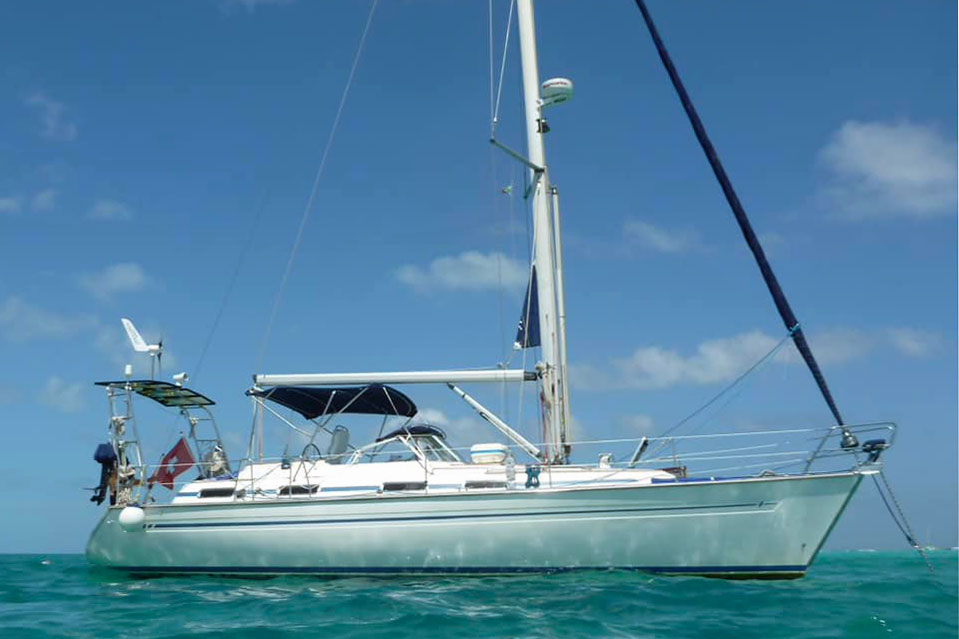 Bavaria 40CC
Bavaria 40CCConstruction Techniques & Material Choices
Bavaria Yachts is known for its highly modern manufacturing. They lean heavily on computer-aided design and CNC systems. Every single Bavaria yacht, from the very first layer of laminate to the final polish, is "made in Germany" at their Giebelstadt shipyard.
Typically, their hulls and decks feature a sandwich construction with foam cores, reinforced with aluminum plates where fittings are attached. Below the waterline, the laminate often consists of hand-laid stitched-biaxial and chopped-strand mat, all set in isophthalic polyester resin. They sometimes add extra layers below the waterline for enhanced strength. What's more, the interiors are crafted in their own joinery shop, with wooden components receiving multiple coats of paint for durability.
While efficient, mass-production techniques are central to keeping costs down, Bavaria stresses quality assurance by partnering with reputable suppliers for equipment and accessories. The idea is to deliver yachts that are not just affordable but also reliably safe and durable for their intended use.
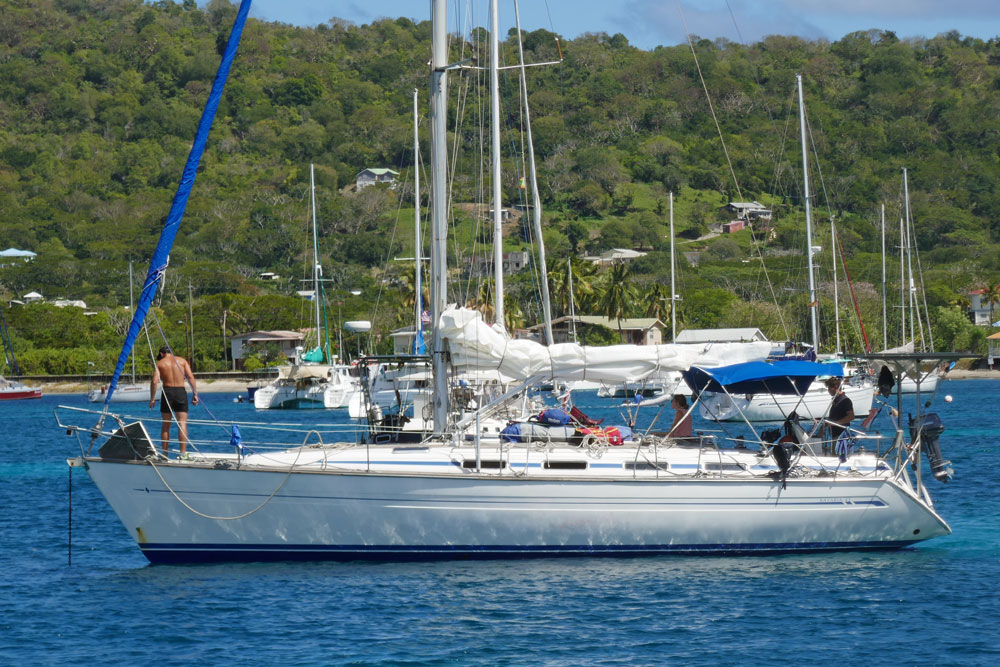 Bavaria 42
Bavaria 42Performance & Life at Sea
Bavaria sailboats are generally praised for their stable, easily managed, and comfortable sailing characteristics – making them great for cruising. They aren't primarily designed for competitive racing, but many models can still put in a respectable performance in a club race. Features like electric winches on larger boats definitely make life easier, even for short-handed crews.
Many Bavaria models, especially the "Ocean" series and larger Cruisers, are considered quite capable for offshore or long-distance passages. This comes down to their robust construction, a comfortable motion in various sea states, and ample tankage. Plus, the CE Class A certification on certain models certainly backs up their suitability for extended voyages.
Inside, Bavaria sailboats usually sport a practical and functional aesthetic. Over time, this has evolved from more traditional mahogany finishes to sleeker, more modern, minimalist designs. The internal layout prioritizes maximizing usable space, offering a variety of cabin configurations to fit different needs – whether it's a couple or a larger family. Expect well-proportioned galleys with plenty of counter space, cozy berths, and good headroom. The overarching goal is livability and comfort, especially for longer stints aboard.
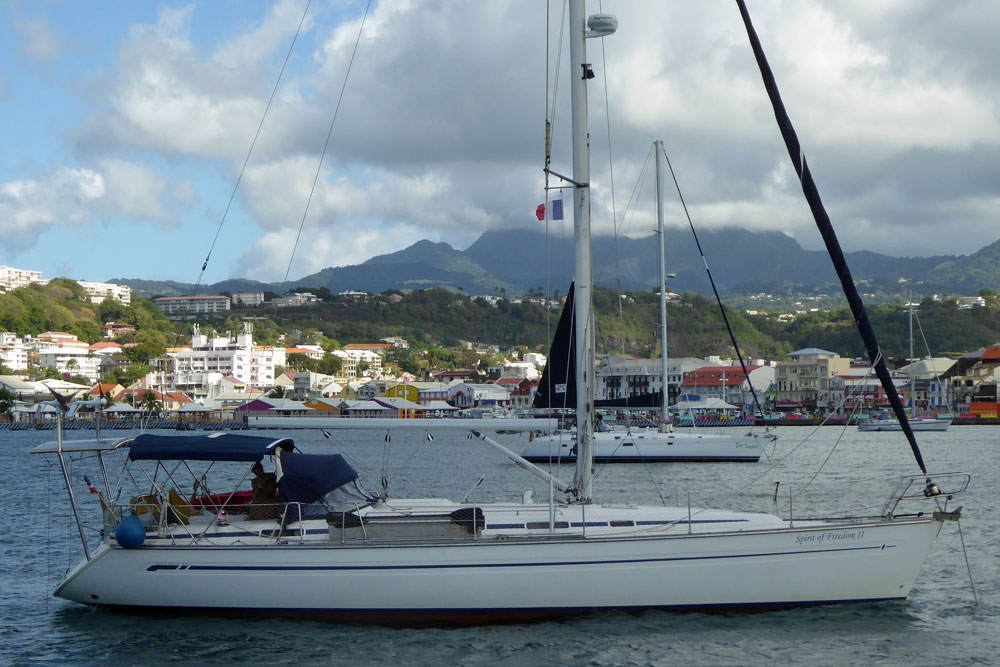 Bavaria 44
Bavaria 44What to Look For: A Buyer's Perspective
If you're eyeing a Bavaria sailboat, you can generally anticipate a well-engineered and robustly built vessel that offers good bang for your buck. Their roots in mass production mean you typically get a lot of boat for your investment.
Common characteristics include:
- Generous Interiors: Bavaria yachts are known for their voluminous cabins, creating comfortable living spaces.
- Practical Deck Layouts: Designed for ease of handling, often with control lines leading back to the cockpit and well-positioned winches.
- Solid Construction: Expect GRP hulls and decks featuring sandwich construction for durability.
- Reliable Performance: While not outright speed demons, they offer stable and predictable sailing, making them ideal cruisers.
One thing to keep in mind, particularly with older models, might be the level of standard equipment; some earlier Bavarias came with a more basic fit-out, with many desirable items as optional extras.
Also, while interiors are generally spacious, some three-cabin configurations might feel a bit more cramped due to hull shape limitations.
On earlier designs, you might also find mainsheet travelers mounted on the coachroof, which could make precise sail trimming a two-person job without a good autopilot.
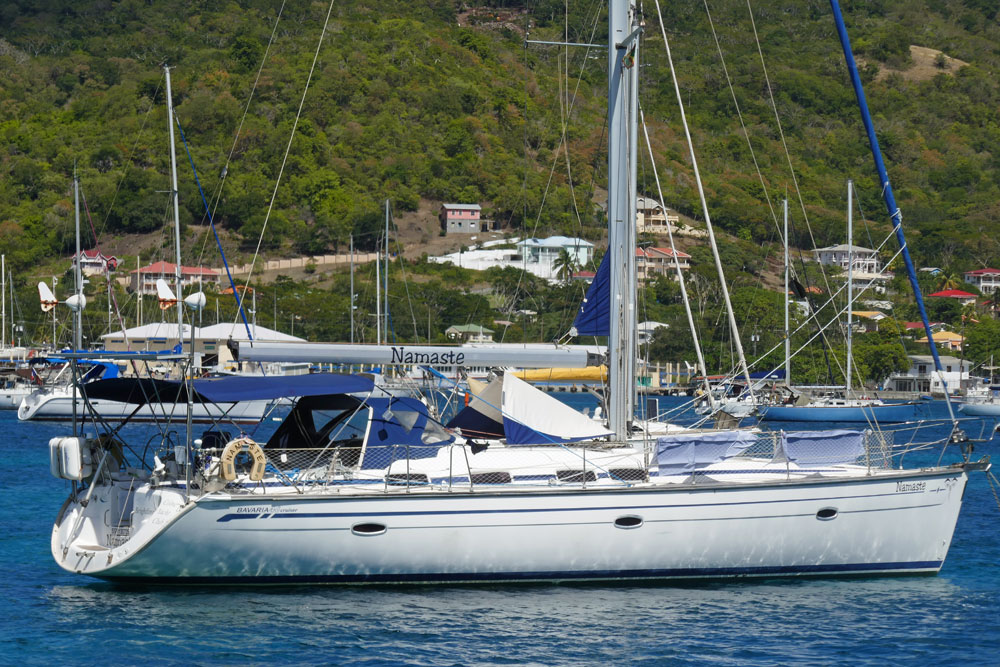 Bavaria 46
Bavaria 46Legacy and Final Thoughts
Bavaria Yachts has cemented its legacy as a significant force in the global sailboat market. Their most impactful contribution arguably lies in demystifying yacht ownership, making well-crafted, comfortable, and capable cruising boats accessible to a wide audience. They’ve earned a solid reputation for delivering quality at competitive prices, a testament to their innovative production methods.
The company continues its evolution, with new lines like the C-Line pushing boundaries in design and comfort. Bavaria's steadfast dedication to German engineering, coupled with collaborations with renowned naval architects, ensures their ongoing relevance in today's sailing world. Their influence is evident in the countless cruising sailors who have ventured forth on their dependable and comfortable vessels, truly making Bavaria a cornerstone of the contemporary yachting world.
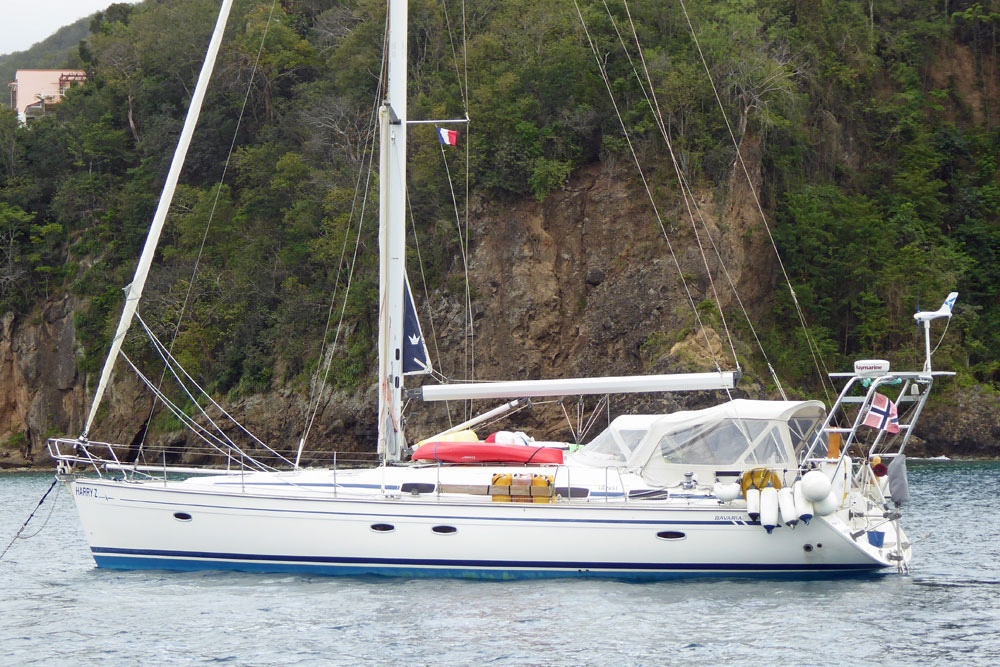 Bavaria 50
Bavaria 50References & Further Reading about Bavaria Sailboats
- Bavaria Yachtbau - Wikipedia: https://en.wikipedia.org/wiki/Bavaria_Yachtbau
- Bavaria Sailing Yachts - Clipper Marine: https://www.clippermarine.co.uk/new-boats/bavaria-sailing-yachts
- BAVARIA YACHTS | Sailing Yachts and Motor Boats made in Germany: https://www.bavariayachts.com/
- The shipyard | BAVARIA YACHTS: https://www.bavariayachts.com/we-are-bavaria/the-shipyard/
- Sailing Yachts | BAVARIA YACHTS: https://www.bavariayachts.com/sailing-yachts/
- Sailboats Built By Bavaria Yachts (GER) - SailboatData.com: https://sailboatdata.com/builder/bavaria-yachts-ger/
- Bavaria C38 - BAVARIA YACHTS: https://www.bavariayachts.com/sailing-yachts/c-line/bavaria-c38/
- Bavaria Cruiser 46 - Sail Magazine: https://sailmagazine.com/boats/boat-review-bavaria-cruiser-46/
- Bluewater Sailboat - Bavaria 44 Ocean - OceanWaveSail.Com: https://oceanwavesail.com/explore-sailing/bluewater-sailboats/bluewater-sailboat-bavaria-44-ocean/
- Bavaria 34: find out why this boat was a sell out success: https://www.pbo.co.uk/reviews/boats/bavaria-34-the-sell-out-success
- BAVARIA YACHTS – 45 Years of Yachting: https://www.bavariayachts.com/we-are-bavaria/
- Review of Bavaria 31 - www.yachtdatabase.com: https://www.yachtdatabase.com/en/review.jsp?id=Bavaria+31
- Boat Review: Bavaria Cruiser 46 - Sail Magazine: https://sailmagazine.com/boats/boat-review-bavaria-cruiser-46/
- Bavaria 50 Cruiser - Specs, layout & video - SamBoat: https://www.samboat.co.uk/model/bavaria-50-cruiser
Recent Articles
-
Modern Boat Electronics and the Latest Marine Instruments
Dec 20, 25 05:27 PM
Should sailboat instruments be linked to the latest boat electronics as a fully integrated system, or is it best to leave them as independent units? -
Hans Christian 43: Classic Bluewater Cruiser & Liveaboard Sailboat
Dec 10, 25 04:37 AM
Explore the Hans Christian 43: a legendary heavy-displacement, long-keel sailboat. Read our in-depth review of its specs, design ratios, and suitability for offshore cruising and living aboard. -
Planning Your Sailboat Liveaboard Lifestyle: An Ocean Sailor's Guide
Dec 06, 25 05:18 AM
Seasoned sailors share their methodical risk analysis for planning a secure Sailboat Liveaboard Lifestyle, covering financial, property, and relationship risks.












